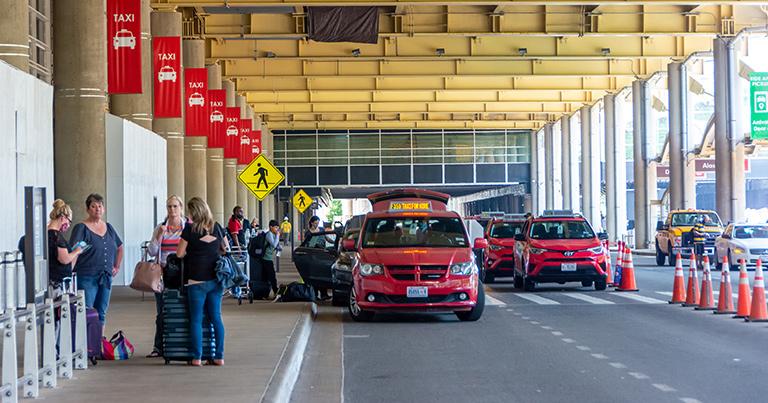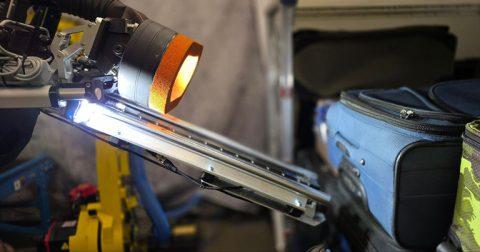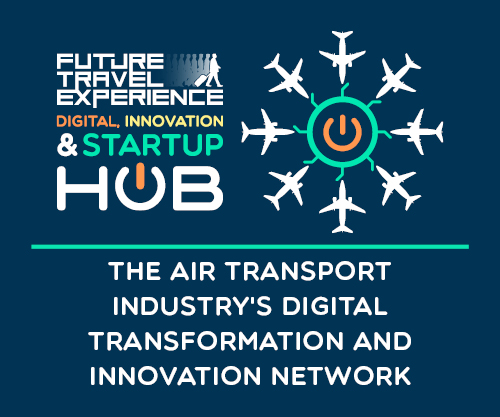Agentic AI solutions – systems capable of autonomously taking actions in complex environments – are rapidly spreading across various industries, including air transport. Progressive airlines and airports are increasingly exploring the potential of advanced autonomy. In part 2 of our comprehensive focus on agentic AI, Metropolitan Washington Airports Authority, United Airlines, Publicis Sapient, and Nagarro, discuss its potential to transform operations and CX with action-oriented intelligence, as well as the ultimate move towards Artificial General Intelligence. Agentic AI will be further explored at FTE Global – the “CES of Aviation” taking place in Long Beach, California, on 9 to 11 September 2025. You can view part 1 of our focus on agentic AI – featuring CVG Airport, Lufthansa Industry Solutions, Aeroporti di Roma, Fraport, and DataArt – by clicking here.
Metropolitan Washington Airports Authority: using agentic AI not just as a tool for analysis, but as an intelligent partner

Metropolitan Washington Airports Authority (MWAA) – a Corporate Partner of the FTE Digital, Innovation & Startup Hub – is actively developing agentic AI through its innovation team, MWAA Labs, to orchestrate airport operations more intelligently. “Our Queue Hub platform is an example – it combines real-time sensing with artificial intelligence (AI)-driven decision-making to predict, automate, and optimise passenger flows, vehicle movements, and resource allocation,” explains Goutam Kundu, EVP and Chief Information and Digital Strategy Officer, MWAA. “Instead of just reporting conditions, Queue Hub recommends and initiates actions, such as reallocating TSA staff, opening customs lanes, or dispatching mobile lounges based on predicted demand. This agentic approach is also being piloted in areas like predictive maintenance for airside equipment, dynamic parking optimisation, and congestion management around high-traffic curbside zones. The common theme is using AI not just as a tool for analysis, but as an intelligent partner that can act on behalf of our teams.”
An upcoming use case involves taxi dispatch. At Dulles International, MWAA is currently developing and testing the ability to dispatch 10 taxis at a time from the staging area when curbside demand requires it. Currently, this process is done manually. The same use case is handled differently at Reagan National, where space is much more limited. “In this instance, we’re developing virtual queuing so that the taxi driver can remotely join the queue when they enter a defined geofence location,” says Kundu. “They no longer need to physically wait on the airport premises. Instead, they could grab a coffee in Crystal City while the system holds their place. This improves airport congestion as well as customer service.”
Kundu highlights some impactful use cases for agentic AI in the airport environment:
- Operational efficiency: “Dynamic staff deployment across TSA, CBP, and concessions; predictive gate and lounge assignments; automated traffic management for curbside and parking.”
- Passenger experience: “Personalised journey updates, accurate wait times across all touchpoints, and proactive disruption management (e.g. automatically notifying passengers of the fastest route through the airport or adjusting shuttles when connections are at risk).”
- Non-aeronautical revenue: “Optimised parking and concessions through demand forecasting; smarter allocation of underutilised assets like overflow lots; and reduced energy/fuel costs through adaptive resource management.”
“Agentic AI’s ability to continuously sense, decide, and act makes these use cases both scalable and sustainable,” Kundu adds.

While, generative AI excels at producing content based on large language models, agentic AI goes further by autonomously taking actions in complex environments. “It doesn’t just generate recommendations, it executes workflows, adapts strategies in real-time, and coordinates resources based on changing conditions,” Kundu shares. “For airports, this means moving from descriptive or predictive intelligence to action-oriented intelligence. Instead of simply knowing wait times at checkpoints, agentic AI adjusts staffing. Instead of flagging traffic congestion, it reallocates lanes. This shift enhances operations by reducing human bottlenecks, improves customer service through faster resolution of disruptions, and accelerates innovation by enabling airports to experiment with self-optimising systems.”
Of course, while offering significant opportunities there are also challenges regarding the utilisation of agentic AI. These include data integration – airports typically have siloed systems, so creating a unified intelligence layer requires careful architecture and data governance; trust and transparency – stakeholders must understand and trust AI-driven actions, especially in regulated environments; and cybersecurity and resilience – as agentic AI systems gain autonomy, ensuring they remain secure, auditable, and resilient against failures is critical. “At MWAA, our strategy includes building technology-agnostic platforms like Queue Hub that integrate diverse sensors and systems,” Kundu explains. “Embedding explain-ability and transparency into AI decisions, so stakeholders see not just the outcome but the ‘why’. Maintaining human-oversight involved in some instances where AI proposes or executes actions. Partnering closely with federal agencies and regulators to ensure compliance and safety are never compromised.”
The power of collaborative innovation is essential in the successful adoption of agentic AI. “No single vendor can deliver the end-to-end intelligence that an airport requires, while no airport can innovate in isolation,” says Kundu. “Our success with Queue Hub came from blending airport operational expertise with technology providers’ innovations in sensing, AI modelling, and automation. The key is co-creation where technology providers bring cutting-edge tools and we as airports bring in the domain knowledge, operational realities, and regulatory constraints that shape effective solutions.”
In the long term, Artificial General Intelligence (AGI) has the potential to orchestrate the entire airport ecosystem seamlessly – from coordinating multimodal transport into the airport, to synchronising baggage, security, and boarding processes, to dynamically adapting to weather and global disruptions. “For operations, this means fewer inefficiencies and near-zero downtime,” Kundu shares. “For customers, it means hyper-personalised, frictionless journeys where the airport anticipates needs before the passenger even articulates them. However, I see this as a gradually evolving process. Before AGI, agentic AI will already deliver transformative results. The real breakthrough will be when AI systems collaborate across airports, airlines, and regulators, creating a globally interconnected aviation ecosystem.”
Looking ahead, Kundu is eager to participate at FTE Global – the “CES of Aviation” taking place in Long Beach, California, on 9 to 11 September 2025 – where he is speaking in ‘The FTE AI Symposium – Part 2: A deep-dive into Agentic AI and the move towards Artificial General Intelligence’. “What excites me most is the exchange of ideas. FTE Global brings together airport leaders, technology innovators, regulators, and airlines under one roof. It’s a rare opportunity to not only showcase our work at MWAA Labs, but also to learn how peers across the globe are reimagining aviation. I’m particularly interested in exploring how agentic AI and digital twins can converge to unlock the next generation of airport intelligence. More broadly, I look forward to discussions that challenge our assumptions, spark collaborations, and set the direction for how we collectively define the future travel experience.”
View the full FTE Global 2025 schedule at a glance >> Register for FTE Global 2025 >>United Airlines on the power of agentic AI for predictive maintenance, enhanced developer productivity and hyper-personalised customer engagement
United Airlines – a Corporate Partner of the FTE Digital, Innovation & Startup Hub – is piloting agentic AI in mission-critical areas such as legacy application translations to modernise integrations, developer productivity and contextual value engineering. These agents operate in a closed feedback loop, learning from each intervention to continually improve precision and impact.

“The greatest value comes from agentic AI in predictive maintenance, enhanced developer productivity and hyper-personalised customer engagement,” explains Kushal Pasari, Director of GenAI & ML Engineering, United Airlines. “These applications directly increase operational reliability and deepen passenger loyalty.”
While generative AI produces content and insights, agentic AI executes decisions and complex workflows autonomously. “This evolution shifts airlines from passive insight consumption to active, real-time optimisation of operations and customer experiences,” says Pasari.
Of course, while offering significant opportunities there are also challenges regarding the utilisation of agentic AI. Integrating agents into legacy platforms, ensuring decision transparency, and embedding safety guardrails are key hurdles. “United addresses these with modular architectures, rigorous governance, and human-in-the-loop controls – ensuring automation augments humans for critical decision-making,” Pasari shares.
United believes the power of collaborative innovation is essential in the successful adoption of agentic AI. “Co-innovation with technology providers is essential to embed airline-specific intelligence into agents, while airport partnerships enable end-to-end optimisation – unlocking efficiencies that no single stakeholder can achieve in isolation,” says Pasari.
While agentic AI already represents a significant leap forward, the move towards Artificial General Intelligence (AGI) could have a profound long-term impact. “As AGI matures, aviation will evolve into a self-orchestrating ecosystem where maintenance, scheduling and customer interactions continuously optimise themselves,” Pasari explains. “The result will be unprecedented operational resilience and deeply personalised passenger journeys.”
Looking ahead, Pasari is eager to participate at FTE Global – the “CES of Aviation” taking place in Long Beach, California, on 9 to 11 September 2025 – where he is speaking in ‘The FTE AI Symposium – Part 2: A deep-dive into Agentic AI and the move towards Artificial General Intelligence’. “FTE Global is an amazing forum to share real-world AI deployment lessons and shape the industry’s adoption roadmap. I’m looking forward to collaborating with peers on the standards, governance, and innovation pathways that will define aviation’s AI future.”
View the full FTE Global 2025 schedule at a glance >> Register for FTE Global 2025 >>Publicis Sapient: Designing and deploying agentic AI solutions that go beyond traditional automation

Publicis Sapient – a Gold Sponsor of FTE Global, the “CES of Aviation” taking place in Long Beach, California, on 9 to 11 June 2025 – has been at the forefront of designing and deploying agentic AI solutions that go beyond traditional automation. “Our work spans intelligent digital assistants capable of independent decision-making, predictive analytics for dynamic pricing, and operational artificial intelligence (AI) tools that optimise scheduling and resource allocation,” explains Teaque Lenahan, Managing Partner & Group VP, Publicis Sapient. “For example, we’ve developed AI agents that proactively manage customer interactions across channels, anticipate travel disruptions, and offer personalised recommendations, demonstrating the potential of agentic AI to act autonomously and at scale while integrating seamlessly with existing airline and airport systems.”
Lenahan highlights some key agentic AI use cases:
- Operational efficiency: “AI agents can autonomously adjust crew scheduling, gate assignments, and baggage handling to reduce delays and improve resource utilisation.”
- Customer experience: “Personalised travel assistants can manage itineraries, proactively handle disruptions, and provide real-time support. For example, let’s say a train from Florence to Rome is suddenly cancelled due to a rail strike. An AI travel assistant can immediately detect the disruption, rebook the traveller on a high-speed bus that still arrives in time for evening plans, adjust museum tickets by an hour, and suggest a nearby café to wait comfortably – all while automatically notifying hosts or reservations of the updated schedule, removing the stress of scrambling through apps, lines, and phone calls in an unfamiliar city.”
- Revenue optimisation: “Dynamic pricing engines and targeted offers powered by agentic AI can maximise ancillary revenue while tailoring services to individual traveller preferences.”
“Overall, these use cases enhance operational resilience, improve passenger satisfaction, and open new revenue streams,” Lenahan adds.

While generative AI focuses on creating content – text, images, or dialogue – agentic AI extends these capabilities by taking autonomous actions in real-world environments. “Agentic AI can plan, decide, and execute tasks without human intervention, integrating multiple data sources and continuously learning from outcomes,” says Lenahan. “For airlines and airports, this represents a transformational shift: instead of AI simply assisting humans, it can proactively manage complex operational processes, anticipate passenger needs, and dynamically respond to disruptions, fundamentally changing how the industry operates.”
Of course, while offering significant opportunities there are also challenges regarding the utilisation of agentic AI. These include data integration, as combining disparate legacy systems to feed agentic AI requires careful architecture and governance; trust and accountability – ensuring AI actions are transparent, explainable, and aligned with regulations is critical; and cultural adoption, with teams needing to embrace AI as a collaborative partner rather than a replacement. “Best practices involve phased implementation, rigorous pilot testing, building cross-functional AI governance frameworks, and investing in training staff to work effectively alongside AI agents,” Lenahan shares.
Indeed, agentic AI is not just about automation – it’s about transforming the way we work. There are, inevitably, concerns about how agentic AI will reshape the workforce and whether it will displace certain jobs, or instead create new opportunities. “Routine, repetitive tasks – like schedule adjustments or initial customer inquiries – can be automated, freeing employees to focus on high-value, creative, and interpersonal work,” Lenahan explains. “New opportunities will emerge in AI oversight, strategy, and data analysis, creating a hybrid workforce where humans and AI collaborate to deliver superior operational and customer outcomes.”
The power of collaborative innovation is also essential in the successful adoption of agentic AI. While Publicis Sapient brings expertise in AI strategy, design, and deployment, success depends on deep insights from industry players who understand operational complexities, regulatory requirements, and passenger expectations. “Close partnerships ensure AI solutions are practical, compliant, and scalable, with rapid feedback loops to iterate and optimise performance,” says Lenahan.
While agentic AI already represents a leap forward, the eventual arrival of Artificial General Intelligence (AGI) could redefine industry boundaries. “AGI would enable machines to reason, adapt, and perform tasks across virtually any domain at human-level proficiency,” says Lenahan. “For airlines and airports, this could unlock unprecedented operational agility, hyper-personalised passenger experiences, and entirely new business models, though the timeline and practical deployment remain uncertain.”
Looking ahead, Lenahan is eager to participate at FTE Global – the “CES of Aviation” taking place in Long Beach, California, on 9 to 11 June 2025 – where he is speaking in ‘The FTE AI Symposium – Part 2: A deep-dive into Agentic AI and the move towards Artificial General Intelligence’. “We’re excited to engage with airline and airport leaders to explore how agentic AI can solve real-world challenges. FTE Global provides a platform to exchange ideas, showcase innovations, and collaborate on shaping the future of travel. We look forward to demonstrating how Publicis Sapient’s expertise in agentic AI can enhance operations, elevate customer experiences, and drive measurable business outcomes in the aviation ecosystem.”
View the full FTE Global 2025 schedule at a glance >> Register for FTE Global 2025 >>Nagarro on the advantages of introducing agentic AI in operational as well as customer-facing processes

Nagarro, a Gold Sponsor of FTE Global – the “CES of Aviation” taking place in Long Beach, California, on 9 to 11 September 2025, has a team of aviation tech experts that is very much focused on deep diving into the nuances of emerging digital technologies. At FTE Global, Steve Hodges, Co-practice Lead – Aviation, Nagarro, and Vinay Yadav, Practice Lead – Aviation, North America, Nagarro, are participating in a session focused on ‘Leveraging new technology and protecting air transport’s critical technology infrastructure’ with a presentation titled ‘Agentic AI in Travel’. “Through this presentation, we aim to highlight the role of agentic AI in the airline industry,” Hodges explains. “Some of the key highlights would include a quick-dive into why we need agentic AI-driven solutions today, the advantages of introducing agentic AI in operational as well as customer-facing processes, and learnings from real-world industry-wide use cases.”

Nagarro is proactively leveraging agentic AI to accelerate digital transformation across multiple industries, including aviation. One of its major innovations is Ginger AI – an agentic AI-powered platform that works as an intelligent co-worker to support autonomous, contextual, and proactive interactions with employees. “We have developed Ginger AI as a cost-efficient and scalable agentic AI solution with managed services that can be easily tailored to enterprise needs,” says Hodges. “Imagine Ginger AI like an upgrade – from merely using GPS while driving to transforming to an autonomous vehicle. Once implemented, the platform transforms employee experience from mere reactive assistance to real-time and intelligent support.”
Another example is NIA (Nagarro’s Intelligent Agent accelerator), which empowers enterprises to quickly build and deploy AI agents. “We have already implemented NIA across a range of industries, such as automotive and financial services, and are looking forward to introducing it to the travel and aviation industry,” Hodges shares.
Agentic AI brings great opportunities in the air transport space. Promising use cases include, for example, flight scheduling. “Considering weather disruptions, threat of war, aircraft maintenance schedules, it becomes crucial to consider multiple factors and optimise flight timings accordingly,” says Hodges. “Of course, we have made a lot of inroads in the automated assistance front already where customer service representatives are already providing AI-driven instant, intelligent responses to customer queries.”
Hyper-personalisation is another area which has a lot of scope in terms of personalising meals according to each customer, personalising services and information, inflight retail experiences, etc. “I would also like to stress on the security and compliance aspect where air travel entities can keep themselves updated on various aviation regulations by leveraging AI, and ensure that all operations, communications, and documentation are in order,” Hodges adds. “Once these areas are enhanced, the overall operations and passenger experience will be positively impacted, that will in turn improve revenue.”
Nagarro strongly believes that collaboration is the key to any successful development. Agentic AI systems thrive on contextual intelligence, real-time data, and domain-specific workflows – all of which require deep integration with the operational environments of airlines, airports, and other aviation authorities. “Tech providers like Nagarro bring the AI expertise, platform capabilities, and engineering scale, but it’s the industry players who provide the real-world challenges, data ecosystems, and regulatory frameworks that shape meaningful solutions,” Hodges explains.
The move toward Artificial General Intelligence (AGI) represents a seismic shift in how the aviation industry, in fact all industries, will operate. For Nagarro, this transformation aligns perfectly with its vision of fluidic enterprises and intelligent ecosystems. “In the aviation space, I can envision AGI being leveraged primarily in four crucial areas,” Hodges shares. “Firstly, to build hyper-personalised traveller journeys, where systems understand and anticipate passenger needs across languages, cultures, and contexts. Next, to boost operational efficiency multi-fold through predictive maintenance, autonomous air traffic control, optimising fuel consumption, enhancing safety stems, and so on. Then, AGI can be utilised to bridge fragmented entities such as airlines, airports, regulators, and passengers, creating a seamless, intelligent network. Lastly, and most importantly, to help aviation leaders take complex and strategic decisions through AGI-driven tools that can simulate scenarios, forecast disruptions, and recommend strategic actions – far beyond what current analytics can offer.”
Looking ahead, Hodges is eager to participate at FTE Global – the “CES of Aviation” taking place in Long Beach, California, on 9 to 11 September 2025. “I mostly value the comprehensive networking opportunities, and the chance to showcase our latest innovations to a varied, yet like-minded audience spanning airlines, airports, government agencies, and other technology consultants and providers like us. Coming to this year’s event, the theme of ‘Collaborative Transformation’ is quite fascinating, as we truly resonate with the fact that effective collaboration plays a crucial role in a well-rounded transformation.”
View the full FTE Global 2025 schedule at a glance >> Register for FTE Global 2025 >>You may also be interested in
12 technology and CX trends that can enhance airline and airport operations in 2025







